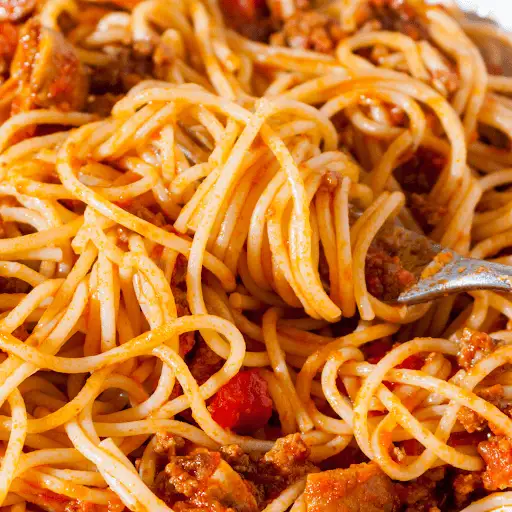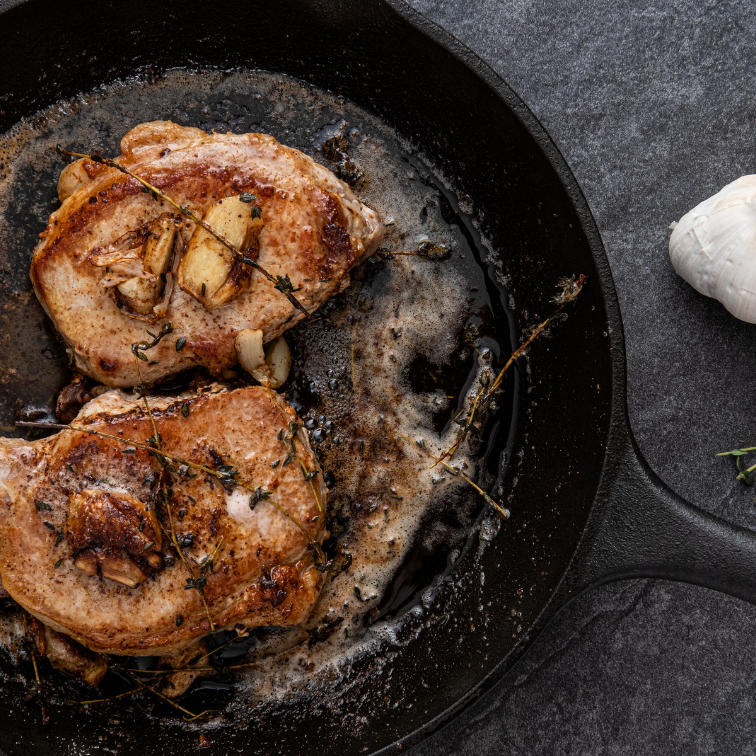We’ve all been there — you’re simmering a homemade sauce, feeling proud of your culinary skills, and then… disaster strikes.
The sauce burns.
Whether you accidentally left the heat too high or got distracted for just a couple of minutes, the burnt taste can be overwhelming, threatening to ruin your entire dish.
But don’t worry! You don’t have to toss out the sauce just yet.
Today’s post will guide you through various methods, tips, and tricks to save your sauce and remove that unwanted burnt flavor using simple ingredients you likely already have in your kitchen.
Why Does Spaghetti Sauce Burn?
Burning sauce often happens when you’re cooking on high heat or using too little liquid, causing it to stick to the bottom of the pan.
Tomato-based sauces, in particular, are prone to burning due to the natural sugars in tomatoes, which caramelize and eventually scorch when left over heat for too long.
This process is known as the Maillard reaction, which enhances flavor when controlled but can quickly lead to burnt flavors if you’re not careful.
To prevent burning in the future, always stir your sauce frequently and cook over low heat.
Adding liquid like water, stock, or red wine can help maintain moisture and prevent the sauce from sticking.
The First Step: Assess the Damage
Before you panic, it’s essential to determine how much of your sauce has been affected. If only the bottom of the pot is burnt, you’re in luck.
The burnt bits tend to stay near the bottom, so the rest of the sauce may still be salvageable.
1. Don’t Stir: If you notice that the sauce is starting to burn, avoid stirring it immediately. Stirring will mix the burnt bits with the rest of the sauce, spreading the burned flavor throughout.
2. Transfer the Sauce: Use a sharp knife or spatula to gently scoop the unaffected sauce into a new pot or clean pan, leaving the burnt layer behind.
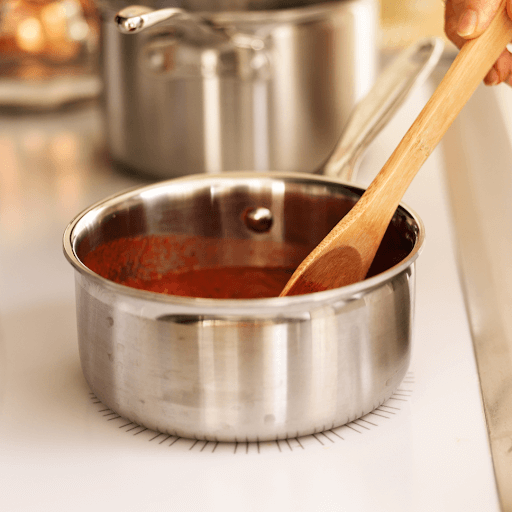
How to Remove Burnt Taste from Spaghetti Sauce
If the burnt flavor has seeped into your sauce, don’t despair! There are several ways to mask or remove that unpleasant bitterness:
1. Add Fresh Ingredients
One of the easiest ways to dilute the burnt taste is by adding fresh ingredients to your sauce:
- Fresh tomatoes or tomato puree can help balance out the burnt flavor. Adding fresh tomato paste also works well.
- A splash of white wine or red wine can add acidity and complexity, masking the burnt taste.
- Adding fresh basil, parmesan cheese, and a drizzle of olive oil will introduce new flavors that help counteract the bitterness.
2. Use a Sweetener
A little bit of sugar can go a long way in reducing the bitter taste from burnt sauce. You can use:
- Brown sugar or maple syrup to add sweetness and richness.
- Honey or a tiny amount of baking soda (a pinch) to neutralize acidity and help balance the sauce’s flavor profile.Be careful not to add too much sugar as it can make the sauce overly sweet.
3. Citrus and Acidity
- A squeeze of lemon juice or lemon zest can brighten up the sauce and balance the bitterness.
- Citrus juice, like orange or lime, can also work as long as you add just a small amount to avoid making the sauce sour.
4. Dairy to the Rescue
- A splash of heavy cream or a spoonful of cream cheese can make your sauce creamier and velvety, helping to mask the burnt flavor. This works particularly well for those who like a creamier red sauce.
- Adding a knob of butter can soften the sharpness of burnt flavors and give your sauce a smoother finish.
5. Worcestershire or Soy Sauce
Sometimes, adding a secret ingredient like Worcestershire sauce or a dash of soy sauce can help disguise the burnt taste by deepening the sauce’s umami flavor. Just be cautious and only use tiny amounts, as these ingredients are potent and salty.
Tips to Avoid Burnt Sauce in the Future
Once you’ve rescued your sauce, you’ll want to make sure you avoid this problem next time.
1. Lower the Heat
The simplest way to avoid burning sauce is to lower the heat. Simmering sauce over low heat allows the ingredients to meld without scorching. If you need the sauce to thicken faster, use a larger pan to promote evaporation, but avoid turning up the heat too high.
2. Stir Frequently
This is key for preventing sauce from sticking to the bottom of the pan. Stir the sauce every couple of minutes to ensure even cooking.
3. Add Liquid
Tomato-based sauces can be prone to burning because they contain sugars that caramelize quickly. Adding a bit of starchy pasta water, broth, or red wine throughout the cooking process helps maintain moisture.
4. Use the Right Pot
Using a heavy-bottomed pot is a good idea when making sauces. Thin pots or pans distribute heat unevenly, which can lead to burnt spots. If you’re using a regular pan, try cooking on lower heat and keep an eye on it.
5. Don’t Rush It
The secret to a rich, flavorful sauce is taking your time. A slow simmer allows the flavors to deepen without the risk of burning. If you’re in a rush, be sure to stir often and keep a lid partially on the pan to prevent too much evaporation.
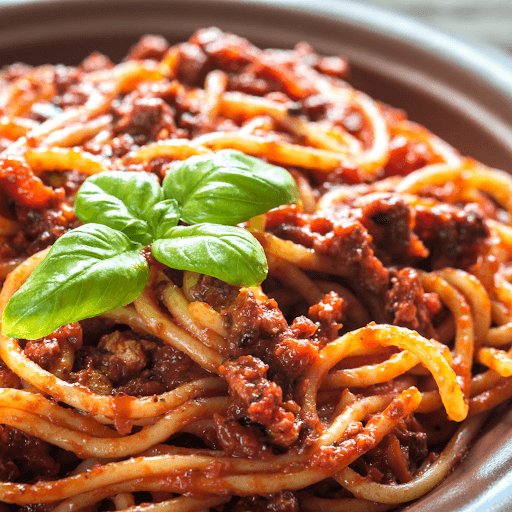
FAQs About Fixing Burnt Spaghetti Sauce
Q: Can burnt spaghetti sauce be saved?
A: Yes! While not all burnt sauce is salvageable, if the burnt bits are isolated at the bottom of the pan, you can transfer the unaffected sauce to a clean pot and add fresh ingredients to mask any remaining burnt flavor.
Q: What can I add to my sauce to remove the burnt taste?
A: Some great options include:
- A splash of white wine or red wine.
- Fresh tomato puree or tomato paste to brighten up the flavor.
- A little bit of sugar, maple syrup, or even baking soda to neutralize the acidity and bitterness.
- Lemon juice or citrus zest can also help balance the flavors.
Q: Should I stir the sauce after it starts burning?
A: No, avoid stirring the sauce immediately after noticing it burning. Stirring will mix the burnt bits into the rest of the sauce, making the burnt flavor more prominent.
Q: Can I use dairy to mask the burnt taste?
A: Yes! Adding a bit of cream, cream cheese, or butter can help soften the bitterness and make the sauce creamier.
How to Revive Burnt Food Smells in the Kitchen
Not only does burnt sauce affect the taste, but the burnt food smell can linger in your kitchen. Here’s how you can remove that unpleasant odor:
- Ventilation: Open windows and turn on fans to clear the air quickly.
- Baking Soda: Place bowls of baking soda around the kitchen to absorb odors.
- Citrus Fresheners: Simmer a pot of water with lemon juice, orange peels, or citrus zest to freshen the air.
- Coffee Grounds: A bowl of coffee grounds is great for absorbing strong smells.
Using Burnt Sauce as a Flavor Booster
Sometimes, the slightly burned flavor can be turned into an asset if done correctly:
- Umami Boost: A slight burnt flavor can add depth and umami to your sauce when carefully balanced with fresh ingredients. If you enjoy smoky flavors, add a hint of soy sauce or Worcestershire sauce to complement the charred notes.
- Mix with New Ingredients: If only a small amount of your sauce is burnt, you can dilute the flavor by adding more tomato puree, fresh tomatoes, or even red pepper flakes to give it a spicy kick.
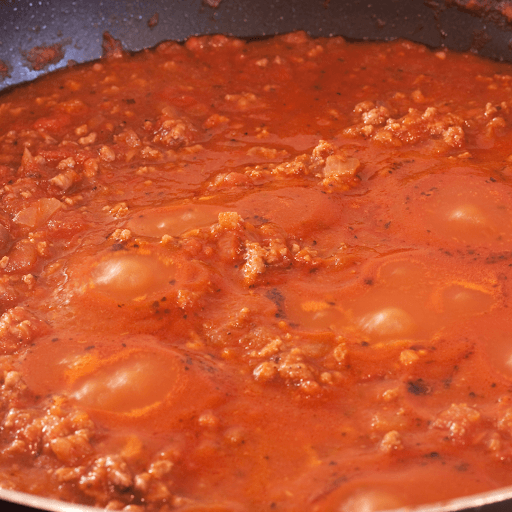
What to Do with Leftover Sauce
If you have leftover sauce, here are some ways to repurpose it:
- Pizza Sauce: Leftover spaghetti sauce can easily become a pizza sauce for a homemade pizza night.
- Soup Base: Thin the sauce with some broth or water and use it as a base for a quick tomato-based soup or fall soup recipe.
- Freezer-Friendly: Leftover sauce can be stored in freezer-safe containers for future meals. Just reheat and enjoy on a busy weeknight!
Storage Tips: How to Keep Your Sauce Fresh
If you’ve managed to save your sauce and you have leftovers, here’s how to store it properly to avoid freezer burn or loss of flavor:
Refrigeration:
- Store leftover sauce in an airtight container and refrigerate for up to 4 days.
- Be sure to allow the sauce to cool before placing it in the fridge to avoid condensation buildup.
Freezing:
- For long-term storage, freeze the sauce in freezer-safe containers or resealable bags for up to 3 months.
- Label and date your containers to avoid confusion later.
- When reheating frozen sauce, allow it to thaw in the fridge overnight before warming it on the stove over low heat to preserve the flavor and texture.
Burning your spaghetti sauce doesn’t have to mean throwing out your hard work. With a few simple ingredients and tricks, you can remove or mask the burnt flavor and enjoy a delicious sauce.
Remember, the best option is always prevention—using lower heat, stirring frequently, and adding enough liquid can make all the difference.
So, next time you find yourself in a burnt-sauce situation, don’t worry! Follow these tips, and you’ll be serving up that authentic spaghetti sauce with confidence in no time.
Happy cooking!

